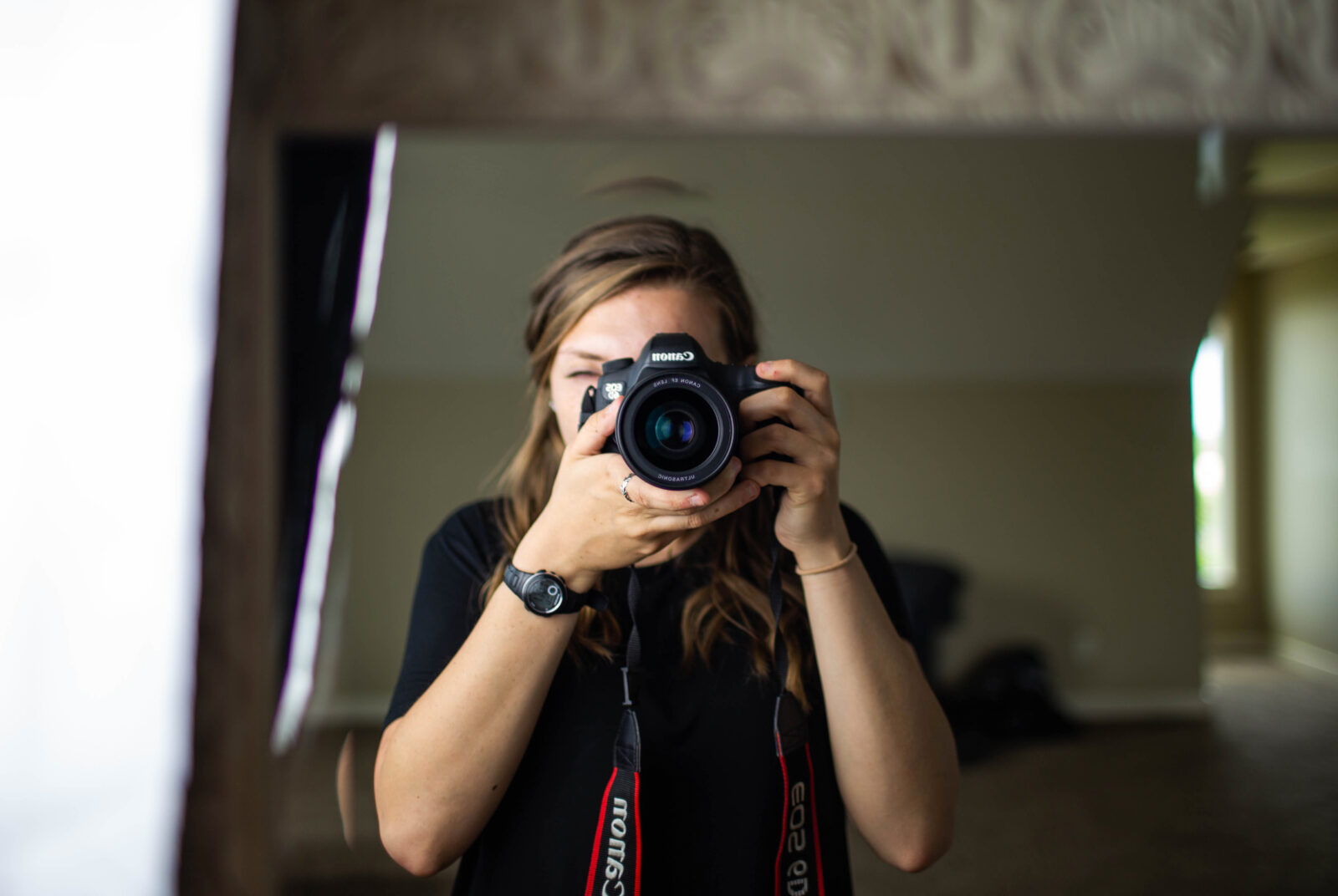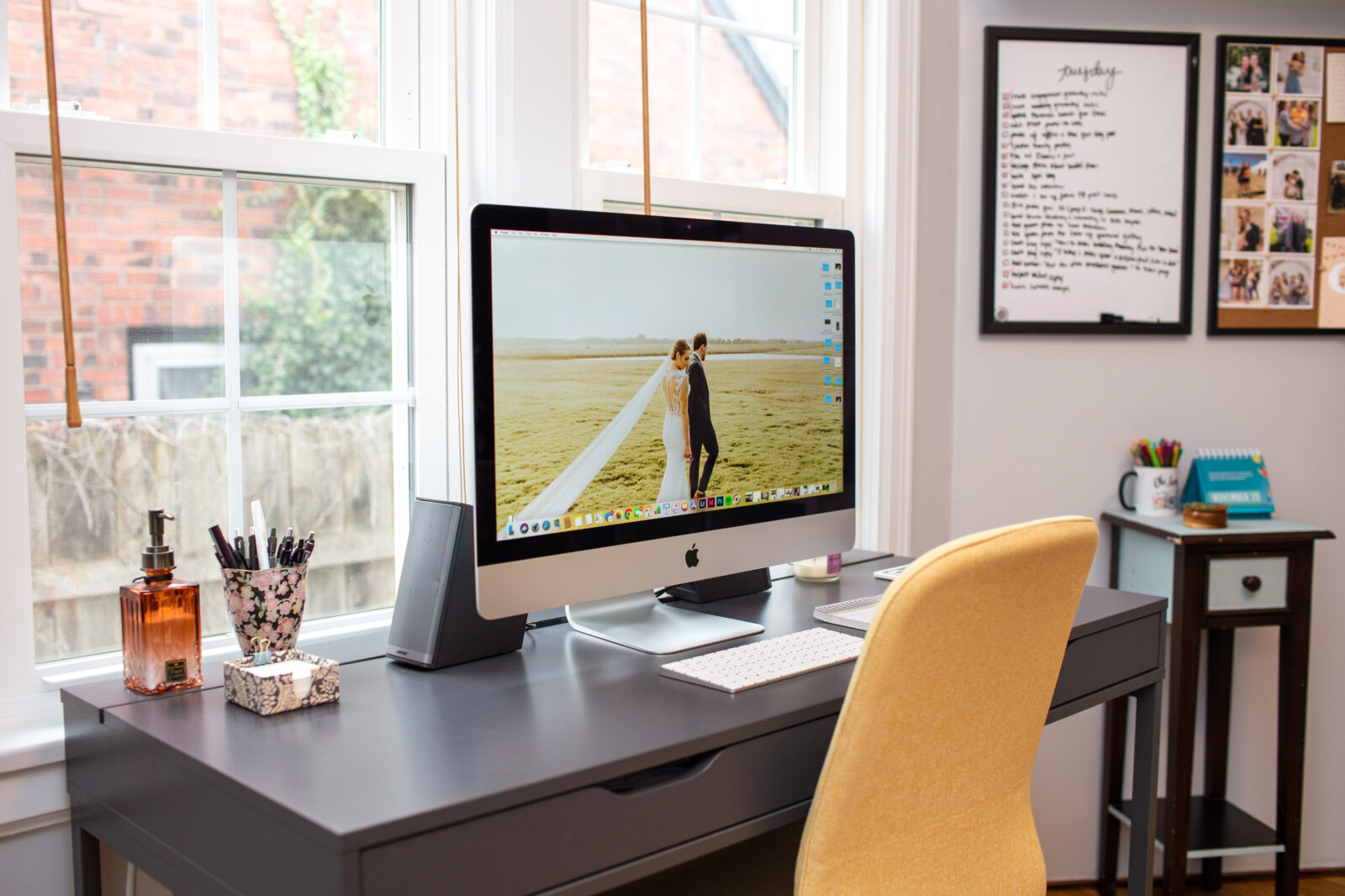This is one of the most frequently asked questions every wedding photographer receives and it’s one that I think every photographer should be able to answer. There are plenty of expenses that wedding photographers share (equipment, online platforms, etc.) but when it comes to the bigger question of value, each individual you work with is going to bring something different to the table.
For this reason, I’m going to break this blog post into two sections: value and expenses.
PART ONE: VALUE
I’m going to start with value since this is what truly differentiates the amateurs from the professionals. Because most of this takes place behind the scenes, folks don’t usually know what small business owners are doing to add VALUE (which can get expensive and time-consuming but that juice is so worth the squeeze!).
QUALITY OF WORK (WHERE TALENT & EXPERIENCE MEET)
Getting focused, properly exposed, color-corrected portraits with everyone smiling are a few things to juggle, but it’s by no means rocket science. But what about doing that while wrangling a family of 50+ for group photos, trying to keep to a tight timeline and ensure everyone’s relaxed? The photographers who can do this seamlessly aren’t just ones who have been shooting for years, these are people that were made for this kind of work!
When it comes to the artistic component, every photographer is going to bring different value. Talent is the big player in this. You have to remember that while photography is technical, it’s also art. While I’m no Vincent van Gogh, I do consider myself an artist, and my photography an art. It’s been said that having “the eye” for photography is crucial, as the technical functions of the camera can be taught, but that can’t. You either have it or you don’t.
From composition, to posing it’s all important, but I don’t think that anything is as important as use of light. My style is one that’s big and bold when it comes to sunlight (I can’t get enough of those warm sun rays) and bright but full of depth when it comes to shooting indoors (why not bounce the light off the wall or ceiling rather than aim it right at the subject?).
Bottom line: quality photos speak for themselves. Note the color, use of light, and composition. Review how people look in the images. Are they relaxed? Is there a blend of candid vs. posed photos? How recent are the images? Are these real clients, or are these photos from styled shoots and a handful of clients? A photographer’s portfolio will tell you most of what you need to know about their quality of work.
EXPERIENCE
For those of you who know me, you know that client experience is my mantra. As a seasoned wedding vendor and a recent bride, I understand what it takes to document a wedding well. It takes planning, strong communication and preparation, but more than that it takes a dedication to giving couples an experience that will shape the way they view their final gallery.
In my eight years of photography experience, I’ve been shooting weddings for four. During those four years I shot 75 weddings while juggling college, graduating, and then working full-time post-grad. Photography was my greatest passion, but I didn’t have capacity for it to be more than my, “millenium side hustle” until I went full-time this year. I’m so grateful for the time that I had to learn, grow and evolve my client experience and quality of work.

EXPERTISE
There are countless ways to describe how expertise adds value, but some of the specific ways I’ve seen expertise influence my business are (1) developing client resources, (2) intentional communication, (3) being seasoned (knowing how to respond to most every situation), and (4) attention to detail.
- Client Resources | All of my engaged couples receive a guide that helps them prepare for their engagement session and have an idea of what to expect out of their experience (I have a more detailed bridal guide that I send to my booked couples). In addition, I am consistently creating blog posts and e-newsletters that have helpful tips for my couples– from vendor selection to creating a wedding day schedule.
- Strong Communication | This is a big one! Right out of the gate I want to be intentional with this. Inquiring clients fill out a contact form on my website that helps me get to know them a bit better, and from there we usually jump on the phone for a consult and have consistent touch points between signing the contract and the wedding. I also use pre-session questionnaires (engagement and wedding) that help me grasp my clients’ vision and cater their photo experience.
- Seasoned Photographer | The more you experience, the more you know. I learn something at every wedding I shoot– no two are the same! But through the experience of shooting 75+ weddings in 7 different states, I can tell you that I’ve photographed in intimate and large venues, year round. I’ve dealt with rain and perfect sunshine, divorced parents and massive extended families. Each scenario needs a different approach, and time + experience has taught me how to manage them.
- Attention to Detail | This one is pretty straightforward– making sure your bridesmaid removes the hair tie on her wrist, adjusting the groom’s slightly askew tie, or having Uncle Gary take a step closer to the group during family photos so that he isn’t on his own island, awkwardly far away from everyone else).

EDUCATION (PAST AND CONTINUED)
I believe that the best thing you can do for your business is invest in your continued education and ensure that you’re staying up to date with the latest and greatest.
For past education, I have a B.A. in marketing (something that has served me well as a small business owner) and a photography minor. In November of 2018 I attended a two day business workshop called Hustle and Flow, one of the top business education courses for wedding vendors. In addition, I have (and will continue to) invest in business + photography workshops, webinars and courses that will continue to enhance the quality of my photography, business and client experience.
BACKUPS FOR DAYS
Believe it or not, there are quite a few steps between photos being taken on a wedding day and clients receiving an email that their final gallery is complete. SD card and hard drive corruption are a sad and very stressful reality for photographers. A few key things that photographers can (and should) be doing are:
- Regularly replacing SD cards.
- Shooting with multiple camera bodies while recording to multiple cards (higher end cameras have features where you can have the images copy to two different cards, mitigating risk if one of them gets corrupted).
- Backing up RAW images multiple places (talk about not putting all your eggs in one basket). I prefer to back up on my Mac desktop hard drive, at least one external hard drive and online.
- Waiting to erase SD cards until final gallery is delivered.

PART TWO: EXPENSES
Now that we’ve covered value, let’s transition to true expenses. For most, this is a blend of the cost of doing business (CODB) and expenses that contribute to adding value. Again, these expenses are typically behind the scenes, but are key in running a small business.
EQUIPMENT
Photographers spend bank here. Between my lenses, two camera bodies, endless SD cards, lighting gear and 27″ Mac desktop, I easily have $10,000 vested in equipment. Speaking of which, insuring all of that is another big expense!
TIME (SEEN + UNSEEN WORK)
On an average wedding day, I will spend 8-12 hours actually shooting the day from start to finish.
Behind the scenes I typically spend 2-3 hours preparing for the wedding day. This includes prepping gear, client communication, creating a master document (which includes a detailed timeline, specific groupings for family photos, and key photos the couple wants captured) and location scouting for portraits.
Backing up, culling (sorting), editing, organizing and sending the final images is quite time consuming. From start to finish, I spend a minimum of 20 hours on the file management + editing process. Editing typically entails removing blemishes, straightening/cropping, and adjusting lighting, color and contrast.

TAXES
Oh you better believe that we pay them too! Just to be safe I set aside 30% from every invoice to put towards taxes.
EDITING SOFTWARE
Prior to beginning the process of editing, I sort through all of my images using a program called Photo Mechanic that processes RAW files quickly (it was a one time purchase of $120). The majority of photographers edit with Adobe software. To access the most up to date versions of these programs, Adobe only offers a monthly subscription. For Lightroom and Photoshop, I pay $120 every year. I also use InDesign to create client resources (remember those wedding prep guides I referenced earlier?), which is an additional $30/month.
CUSTOMER RELATIONSHIP MANAGEMENT (CRM) SOFTWARE
There are lots of options for small business owners who want to enhance + provide a more professional experience for their clients. I use one that’s catered to wedding photographers called Dubsado ($350 billed annually). I use it to manage client contracts, invoices, payments and forms. It also enables me to stay organized and easily keep track of clients, while giving them easy access to all the info they need (signed contracts, outstanding invoices, questionnaires, etc.).
GALLERY HOSTING
For delivering completed galleries, most photographers pay for an online host. These are password protected by the client, can be shared on social media, downloaded at full resolution, and link directly to professional printers, so high-quality prints are just a click away. Sure it’s the easy button for sharing online galleries with clients, but it’s also not free ($360 billed annually).

ADVERTISING
I’m going to wrap up with advertising because it’s a hefty category that covers some of the more common expenses + time consuming practices that small business owners take on.
- Creating social media content and scheduling posts
- Crafting those IG stories, captions and giveaways takes time!
- Creating and listing digital ads (my focus is Facebook + Instagram)
- Spend varies with these for sure, but if I’m running a campaign, I’ll spend anywhere between $100 – $200/month to generate leads.
- Networking with vendors
- Website
- Domain ($16 billed annually)
- Theme (one time purchase of $250)
- Design (having studied some web design in college, I was fortunate in that I could design my own website, but this can cost several thousand dollars when outsourced to a graphic designer)
- Business cards (expense varies, but I just redesigned mine, ordered through a higher end printer paid about $1/card)
- Wedding Fairs (exhibitor fees vary, but are typically $500+ and then the content you use to showcase your booth can be an additional $500+ as well).
- Listing on the Knot, Wedding Wire or Zola (prices vary, but paying an average of $400/month to advertise on these platforms isn’t uncommon).
So there you have it: a summary of the why professional wedding photography costs what it does! Remember that while there are expenses to cover, there’s also art, experience and talent that contribute to the total of this purchase.